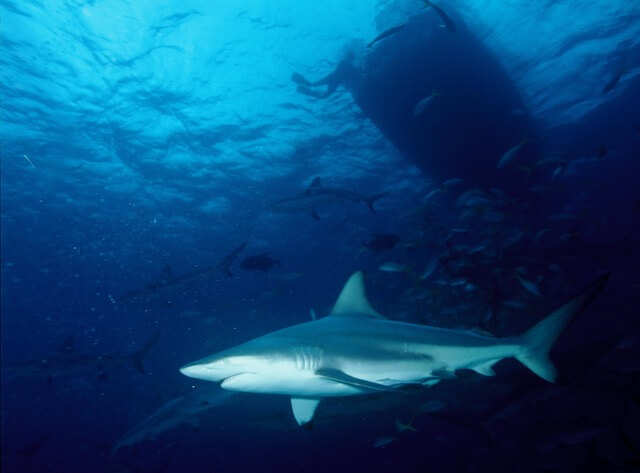
An Inside Look Behind A Trade That’s Endangering Sharks & What You Can Do To Stop It
By Erna Carter
Shark finning is a practice that involves cutting off the fins of a shark—and in most cases dumping them back into the water to suffer through a slow and unethical death. More than 70 million sharks are caught each year to end up in the relentless hands of the shark finning industry. Because of this practice, shark populations are declining, and they are faced with extinction.
What are shark fins used for?
Shark fins are most commonly used in a popular dish called shark fin soup. The fin is typically served inside a flavored broth for added taste. Otherwise, it has a rubbery consistency with no flavor. Shark fins have no nutritional value, yet the dish is considered a delicacy in different parts of the world. It’s most commonly found throughout Asian countries, where a bowl can be sold for more than $100 depending on current demand. The fact that some individuals will pay this cost for soup with no flavor and no health benefits, and at the expense of the marine ecosystem, is mind-blowing!
Why is shark finning bad?
The impact of the shark finning industry is rooted in cruelty and greed. We need to stand up against this form of corruption before we destroy the marine community and wipe out the human race along the way.
Shark extinction would have a catastrophic impact on the environment
Sharks can’t reproduce fast enough to keep up with the rate of overfishing, and according to marine scientists, sharks are critical to maintaining our marine ecosystem, including the survival of our coral reefs.
Sharks contain mercury, which is toxic when consumed
Many consumers of shark fin soup are doing it for the experience, and because it’s a status symbol for the wealthy. They are often unaware that sharks carry high levels of mercury, which can be toxic. You won’t find any health benefits in this dish… that’s a myth!
The process of shark finning is inhumane
Here’s how it works: sharks are caught, their fins are cut off, and they’re thrown back into the water to die— 98% of the shark is wasted. There’s no way around it… that’s cruel. Rob Stewart, a well-known photographer and highly respected ocean advocate, spent his entire life protecting the ocean and standing up for the shark society. In his most recent film, Sharkwater Extinction, Stewart shares an inside glimpse that exposes the gruesome and inhumane details behind the illegal shark fin trade. The famous activist passed away in 2017 during a dive in Florida while filming, but his honor and passion for the ocean continue to live on. For more information about the documentary, visit www.sharkwater.com.
How to put an end to shark finning
Every country is responsible for its own laws and regulations with regards to shark finning. Since 2013, over 27 countries have outlawed the unsustainable practice, thanks to ocean supporters who have been pushing for change. Even with laws in place, however, illegal shark finning still takes place because there is still a demand and money to be made.
Here are three simple ways you can help stop shark finning:
- Don’t support restaurants and businesses that sell shark products.
- Join advocates from organizations like Oceana by signing a petition to tell the U.S. Congress to ban shark fin trades across all states.
- Contribute to shark conservation efforts online and in your community and help create awareness of the issue.
Shark finning is cruel and should be banned worldwide. Take action, and together we can stop these industry leaders from leaving a negative impact on the world’s beautiful oceans and marine creatures.
Erna Carter is an earth-conscious wife and mama of two, inspired by nature and nurturing your lifestyle using green and sustainable concepts. She’s on a mission to educate and create communities that want to live a wholesome life all the way from the desert to the sea. You can follow her journey to living consciously and conserving our oceans and forests by visiting her blog Blissful At Sea for more planet-friendly tips!






